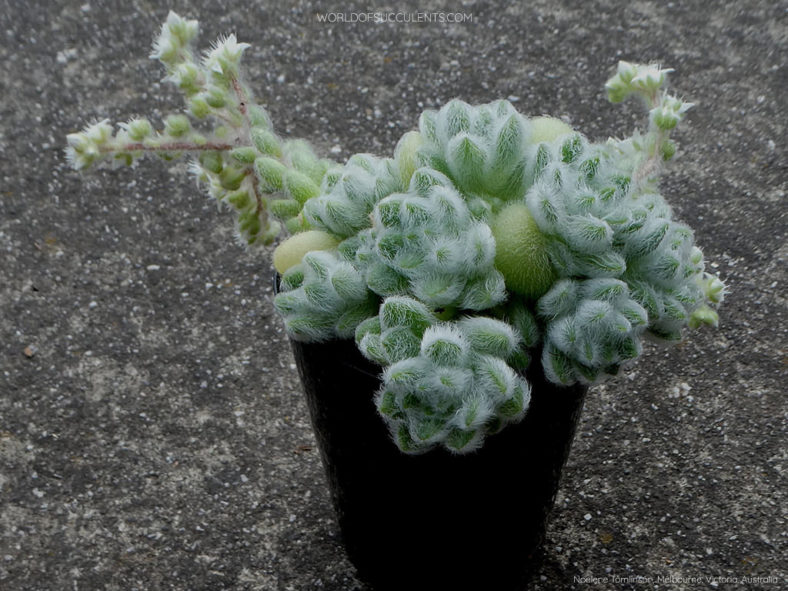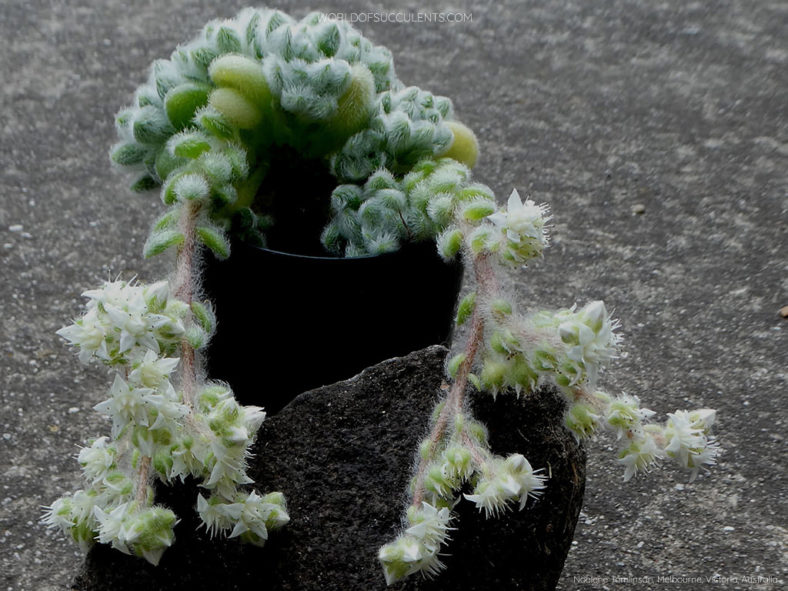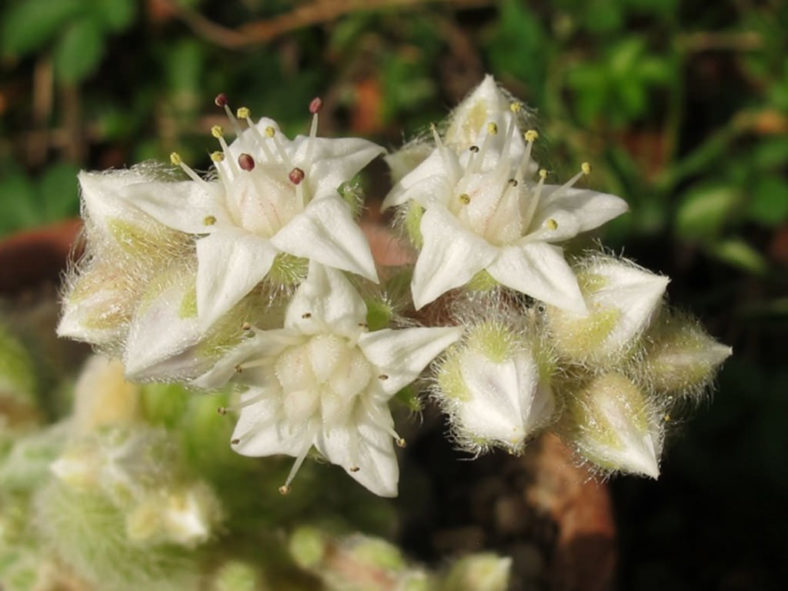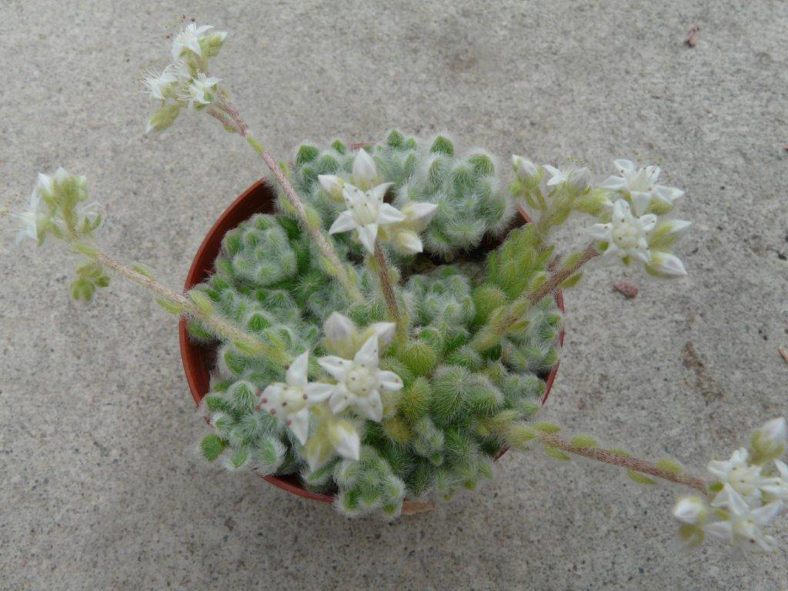Scientific Name
Sedum piaxtlaense J.Reyes, Etter & Kristen
Scientific Classification
Family: Crassulaceae
Subfamily: Sempervivoideae
Tribe: Sedeae
Genus: Sedum
Etymology
The specific epithet "piaxtlaense (per-ASH-tlah-en-see)" means "Of or from Piaxtla" and refers to the Piaxtla River, where this species was first found.
Origin
Sedum piaxtlaense was described in 2015 based on a collection in the Rio Piaxtla Canyon, growing in a tropical deciduous forest in the Sierra Madre Occidental near the border of Durango and Sinaloa in Mexico.
Description
Sedum piaxtlaense is a small succulent that forms a dense tuft of light grayish-green, densely pilose leaves arranged in rosettes around short stems. The stems are light green, covered with long, soft hairs, and can grow up to 1.2 inches (3 cm) tall and 0.2 inches (0.5 cm) in diameter. The leaves are oblanceolate to rhomboid, measuring up to 0.9 inches (2.2 cm) long and 0.7 inches (1.7 cm) wide.
Each rosette produces a stalk with a cluster of star-shaped flowers at the end. The flower stalk can grow up to 4 inches (10 cm) long. The flowers are white, 5-merous, and usually appear in spring.
Sedum piaxtlaense is closely related to Sedum hintonii and Sedum mocinianum, from which it differs in the laxer rosettes, concave leaves of larger diameter, a shorter inflorescence with up to eight flowers per cincinnus and large pedicels, and its distribution in another biogeographical province.

How to Grow and Care for Sedum piaxtlaense
Light: This succulent grows best in locations where it will enjoy the full sun for at least six hours daily. It will tolerate partial shade but will not thrive in deep shade. Keep your indoor plant in a sunny window or under artificial lights.
Soil: S. piaxtlaense does not like to sit in waterlogged soil, so drainage is essential to prevent root rot. Choose a well-draining soil mix.
Hardiness: This plant is tolerant of heat and freezing temperatures. S. piaxtlaense can withstand temperatures as low as 25 to 50 °F (-3.9 to 10 °C), USDA hardiness zones 9b to 11b.
Watering: From spring through fall, water thoroughly and wait for the soil to dry out before watering again. In winter, water your plant just enough to keep it from shriveling. Avoid wetting the leaves, stems, and flowers when watering.
Fertilizing: Feed with a balanced organic fertilizer in spring. Feeding is unnecessary as long the plant is divided annually and provided with fresh soil.
Repotting: Repot your plant when it outgrows its current pot by moving it out to a larger container to hold the plant better. Spring is the best time to repot S. leibergii. Make sure the soil is dry before you begin repotting.
Propagation: Once you have one S. piaxtlaense, it is easy to make more by taking stem cuttings and dividing the plant. It is also easy to grow from seed. Take cuttings in spring when the plant is in active growth. Once it has finished flowering, it is the right time for division. Spring or summer is the best time to sow the seeds.
Learn more at How to Grow and Care for Sedum.
Toxicity of Sedum piaxtlaense
S. piaxtlaense is not listed as toxic for people but can be mildly toxic to pets and children.
Links
- Back to genus Sedum
- Succupedia: Browse succulents by Scientific Name, Common Name, Genus, Family, USDA Hardiness Zone, Origin, or cacti by Genus
Photo Gallery
Click on a photo to see a larger version.


